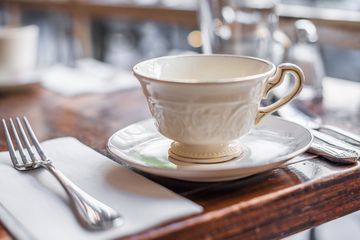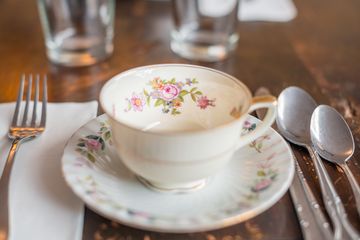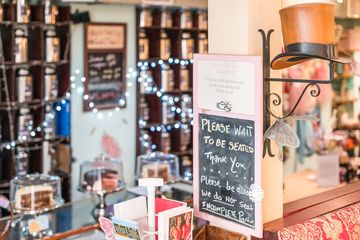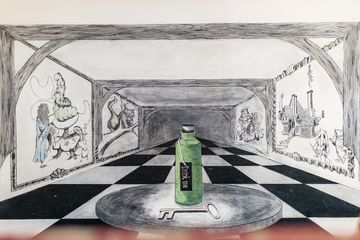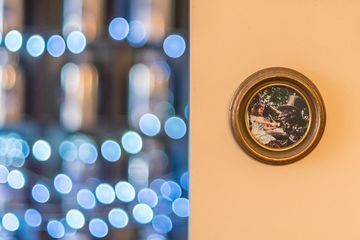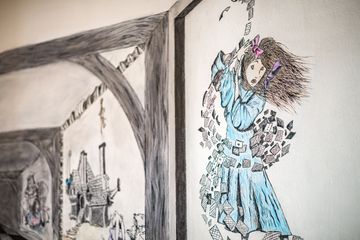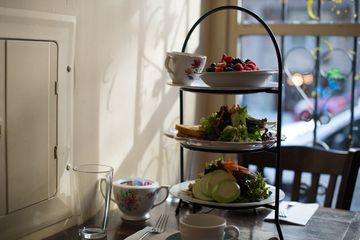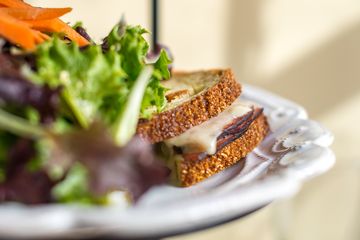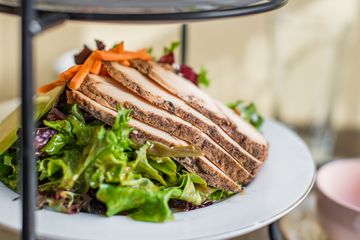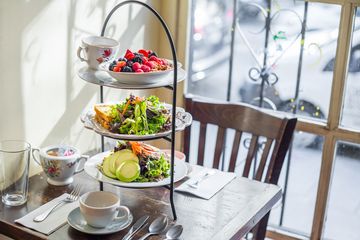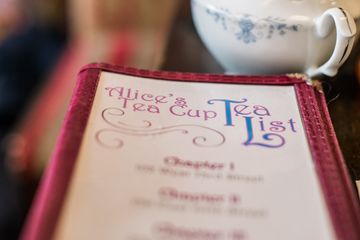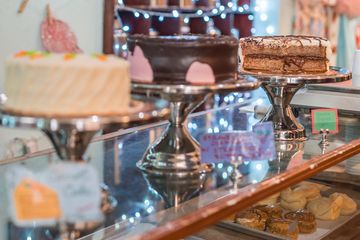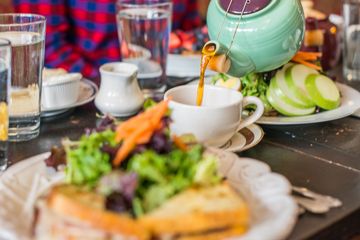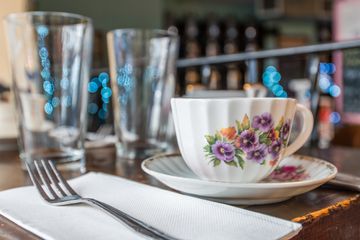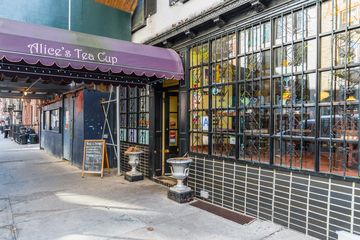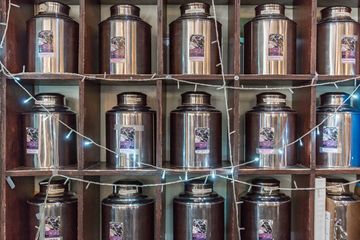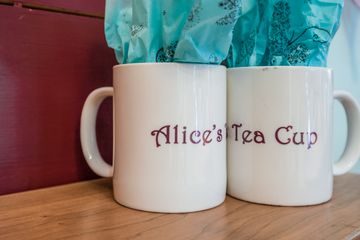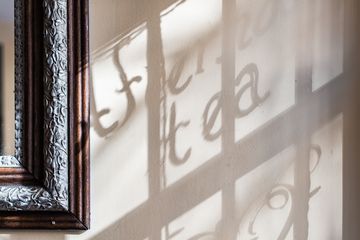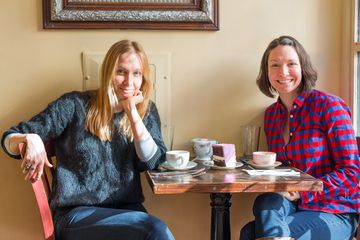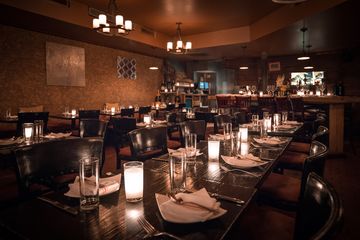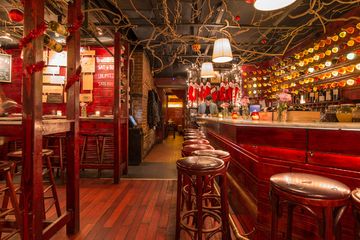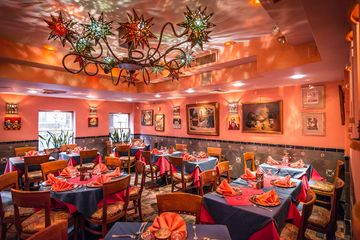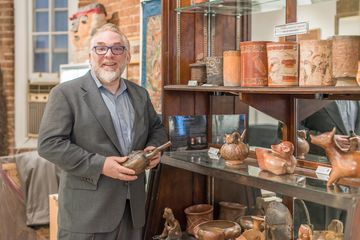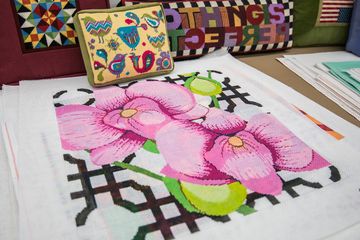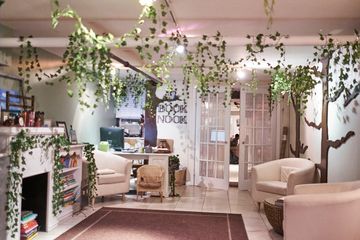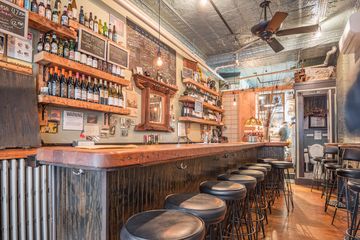
After having visited Chapters I and II of Alice's Tea Cup, the Manhattan Sideways team was excited to meet Haley and Lauren Fox, the masterminds behind the whimsical teahouses.
The two sisters grew up on the Upper West Side with the ritual of drinking afternoon tea. During our interview, I learned that their father is the biggest tea drinker in the family. During their childhood, he had a clear glass mug that was "irreversibly stained" from all the cups he drank each day and was marked with a thumbprint indentation from where he held it.
Initially, Haley and Lauren both followed artistic paths. Lauren became an actress and singer. "She's very good," Haley said with a sisterly look of benevolence. On the day I visited Chapter III, Lauren had just returned from doing a show in London. She has also appeared at a number of Performing Arts Centers throughout the country and sings rock n' roll and folk. Running the teahouses with Haley has afforded her the ultimate day job. "It beats being a bartender," she admitted. Haley's background is in directing and the film industry. For a while, both sisters were in LA (Lauren was performing and Haley was working at MGM). Their West Coast neighborhood hangout was a teahouse called Chado. Haley said that they would continually tell the owner, "You should open in New York," and she would reply, "You should open in New York."
Eventually, when the sisters moved back to New York, they followed her advice and Alice's Tea Cup Chapter I was born in 2001. The family that owned Chado also owned a series of tea fields in Sri Lanka and India, so the sisters invited the family to be their supplier. "We had that in our pockets," Lauren said with a twinkle in her eye. Chado shipped the sisters 120 teas and they tried them all, selecting the best blends to put on their menu.
While speaking with the sisters, I learned that one of the reasons for expanding to different locations was party requests. The party room at the original location cannot hold more than a very tight twenty people, but shortly after opening, they were receiving multiple requests for parties of fifty or more. It was when Haley was walking across the park with her newborn child one day that she came across the 64th Street spot. She loved the location, but did not like how the staircase was way at the back. One day, she returned with her mother and discovered that the space had been leased. The new owner had moved the staircase to the perfect position and was serendipitously interested in selling. Alice's Tea Cup Chapter II was born in 2005.
The last Alice's Tea Cup on 81st Street, where we sat drinking tea, used to be a consignment store called Out of the Closet. There is a carriage house in the back, which is thought to be one of the oldest in the city. Haley told me that she found a broken porcelain baby hand in the back of the space when they were renovating, which seemed like a perfect omen for a restaurant that draws inspiration from the twisted, "trippy" works of Lewis Carroll. It is in this neighborhood that the two women have experienced the strongest sense of community. Because there are not many tourists in the area, their customers are mainly locals who form a band of loyal repeat diners. It is the quietest of their three spots, to the extent that when Chapter II was very busy over the holidays, the management started sending diners uptown to Chapter III. When I inquired about expansion, Haley and Lauren said that although they have no plans to open further chapters themselves, they have been looking to brand Alice's Tea Cup. The sisters hinted that other teahouses could open under different management in the future.
The three existing tea shops appear to function like clockwork, and it is probably thanks to the balanced skills of the owners. "We're very yin-yang," Haley pointed out, sharing the differences that mark the sisters as the day to each other's night. Haley prefers the darker, richer teas that are brewed coffee-black, and she almost always takes them with milk. Lauren, on the other hand, prefers the complex blends and slightly lighter teas. When the sisters first began Alice's Tea Cup, Lauren was going through a phase of drinking a lot of white tea. She recently had a hand in developing "Alice's Fairy Potion," a blend that uses osmanthus flower, which has a distinct apricot flavor. Their views of Lewis Carroll's Alice also differ. Lauren sees the character as a spoiled brat whereas Haley sees her as an early feminist.
Over time, the girls admitted their tastes have grown closer together. They also appear to have similar ideas in decorating: Haley shared that they love to go antique shopping together in order to find things that match each location's aesthetic. She pointed out a sconce decorated with a top hat reminiscent of the Mad Hatter as an example of something they found together. "We have destroyed many framed paintings," she added, showing how the two women used old frames on new photographs and designs. This brought us to the series of colorful photographs that can be found at all three locations: "We wanted to create an urban Alice, a New York Alice," Lauren explained. She asked her friend Devon, who has always had a sense of childlike cheekiness about her, to partake in a photo shoot. Lauren found Devon's dress in a vintage shop, which fit like a dream, and had her step into a pair of combat boots. Devon became the Alice the women were looking for and her likeness can now be found at all three chapters, including in depictions of a grown-up dress-up tea party, where Lauren is also pictured.
After hearing many wonderful stories, I steered our conversation to the menu. While they worked with a chef to put it together, Lauren and Haley came up with many of the initial ideas themselves. Lauren is the baker in the family, and it was she who came up with the original scone recipe, which was tweaked and reworked to become the current Alice's Tea Cup staple. They had great fun experimenting with tea in the kitchen, which is how they discovered creations like lapsang souchong smoked chicken and maté eggs. Olivia, our avid tea drinker and greatest enthusiast for Alice's Tea Cup, sampled both on a salad as well as a delicious Croque Monsieur. "We feed people well," Haley said, smiling as she observed Olivia's happy face.
We had each tried the amazing scones before, but had never tasted Alice's Tea Cup's cakes. When the sisters found out, they brought us a slice of cookies and cream cake for us to try. The buttercream was in perfect proportion to the cake and the texture was heavenly. Haley pointed out that many do not realize that the restaurant does cakes, but that they hope more people discover them. Katie Della and John Ross are the cake masters, and Lauren said that she trusts them entirely, which is why she asked them to surprise her on her birthday and was delighted with a cake covered in henna designs. "God, they can bake," Haley exclaimed. The sisters showed me a picture of a six-layer rainbow cake that had come out of the bakery as well as a stained glass cake. Each one, I was assured, tastes as good as it looks. And the sisters encourage anyone to treat themselves to cake, no matter the occasion. After all, what else does one eat on their un-birthday?
